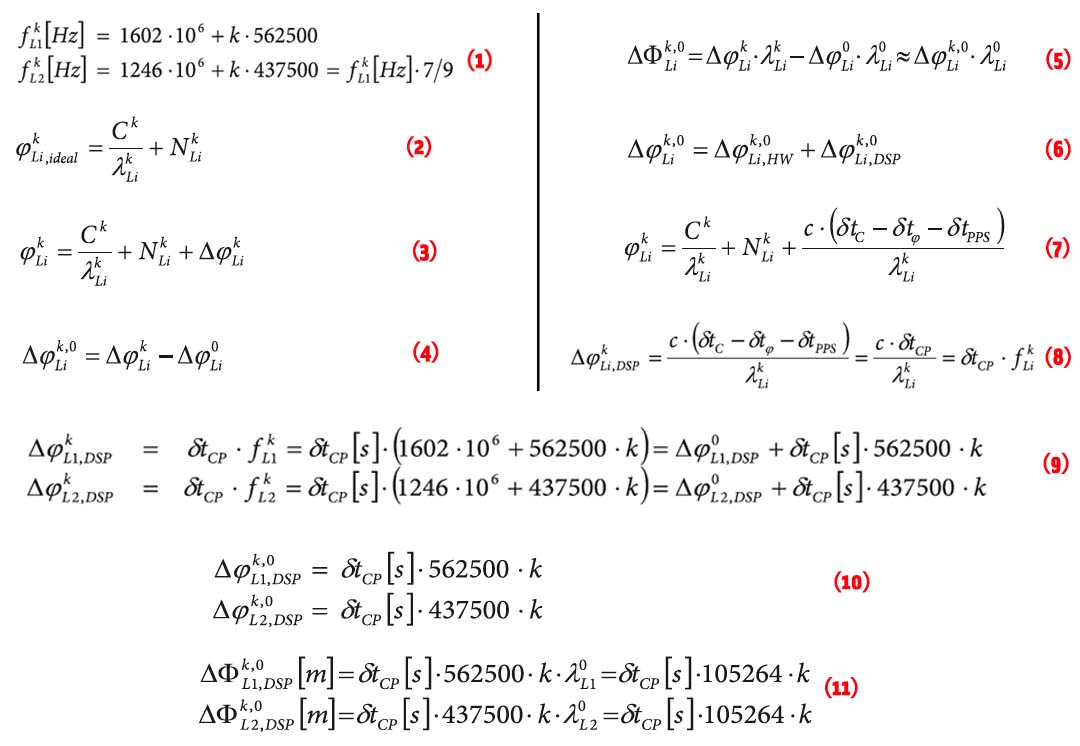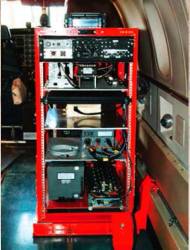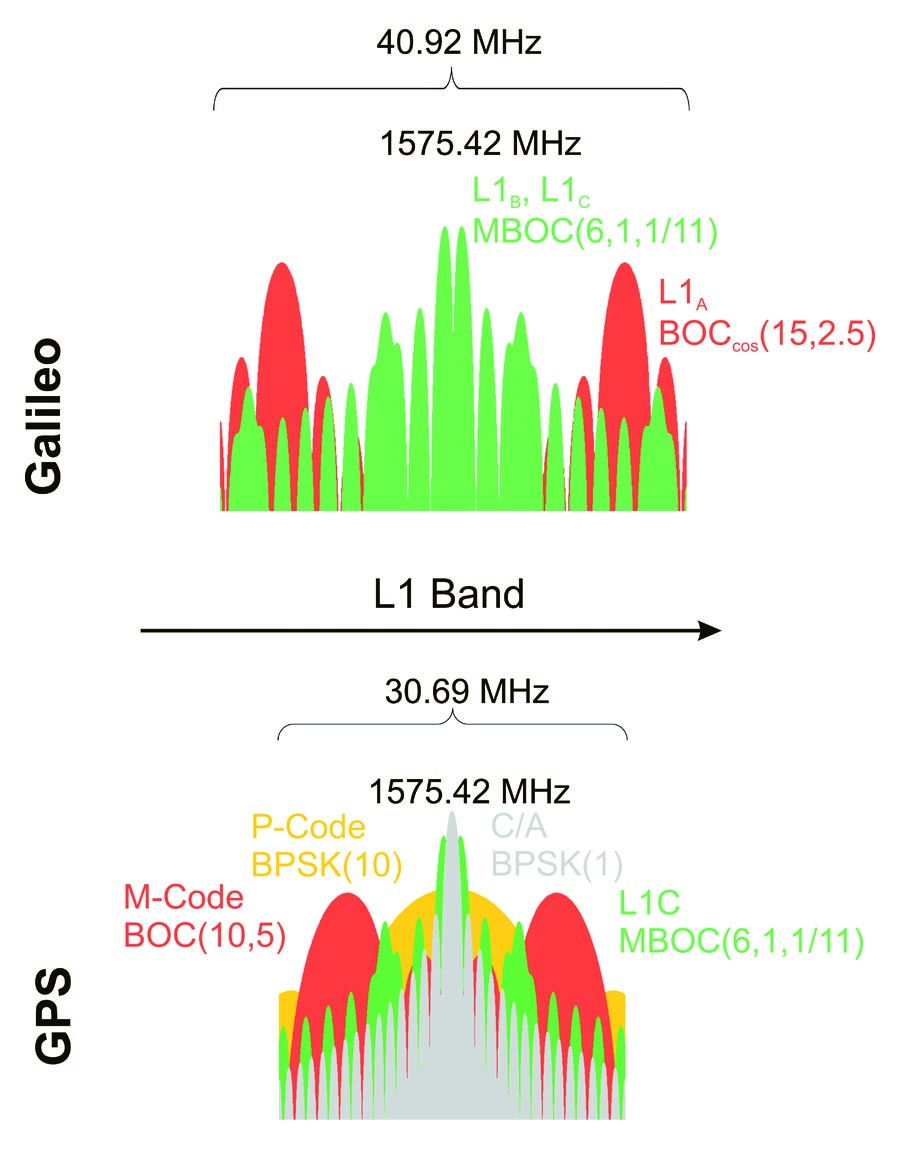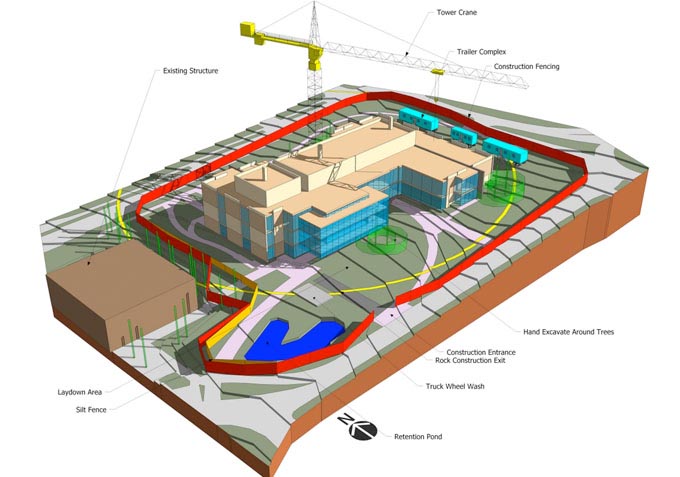Sidebar: Time for Precise Positioning
Return to main article: "Truth on the Range"
By Inside GNSSReturn to main article: "Truth on the Range"
By Inside GNSS EQUATIONS 1 -11
EQUATIONS 1 -11GLONASS currently uses a frequency division multiple access (FDMA) technique to distinguish the signals coming from different satellites in the Russian GNSS constellation. The GLONASS L1 and L2 bands are divided into 14 sub-bands, and each satellite transmits in one of these.
The sub-bands are identified by frequency numbers k, from -7 to 6. The GLONASS L1 and L2 carrier frequencies, in hertz, at a frequency number k are defined by:
Working Papers explore the technical and scientific themes that underpin GNSS programs and applications. This regular column is coordinated by Prof. Dr.-Ing. Günter Hein, head of Europe’s Galileo Operations and Evolution.
By Inside GNSS Typical Rack-Mounted UHARS System
Typical Rack-Mounted UHARS SystemA next-generation “truth” reference system for the U.S. Air Force (USAF) — the Ultra High Accuracy Reference System (UHARS) — is currently under development by the 746th Test Squadron (746 TS) at Holloman Air Force Base, New Mexico.
By Inside GNSSThe 10th TRANSNAV symposium will be held June 19-21, 2013 at Gdynia, Poland, a seaport and resort city on the south coast of the Baltic.
The biennial event is an opportunity for scientists and professionals in navigation, transport, ocean engineering and maritime technology to share knowledge and research on all aspects of maritime navigation and safety of sea transportation. The symposium is held in English.
The organizers expect 300 participants from 50 countries or more.
By Inside GNSS MBOC signal at top, BOC (1,1) at bottom
MBOC signal at top, BOC (1,1) at bottom(Updated May 21) U.S. warfighters could be affected and European navigation users could end up paying more if the British are able to enforce a patent on technology at the heart of the new GPS and Galileo civil signals.
By Inside GNSS
The launch of the first GPS III satellite has slipped to 2015 and completion of the ground control system is now delayed by up to two years, according to the chief of the Air Force’s space operations
“We’ll be ready to launch the first GPS III in 2015, but it now appears the next generation GPS Operational Control System, or OCX, won’t be ready for about a year or two after that,” General William L. Shelton, commander of Air Force Space Command told attendees at the 28th Annual National Space Symposium.
By Inside GNSSUK-based Racelogic has been singled out as a double winner in the Queen’s Awards for Enterprise, receiving both Innovation and International Trade awards.
Announced on April 21 to mark Queen Elizabeth II’s birthday, the 2012 Queen’s Awards for Enterprise listings contained 209 companies, with Racelogic being one of only four to be honored with the award for both Innovation and International Trade.
By Inside GNSS
Legislation moving through Congress could reshape efforts to counter GPS interference as the government steps up its efforts to fight cybercrime and protect critical systems like the power grid and communications networks.
Though cybersecurity generally focuses on protecting information systems the broad definitions in some legislation now on the Hill appear to encompass GPS support systems, some user communities, and even the constellation itself.
By Inside GNSS Variations on the common GPS/Galileo MBOC signal
Variations on the common GPS/Galileo MBOC signalThe U.S. government is so unhappy about a British patent claim on the new civil GPS signal that, if things cannot be worked out, officals might consider abandoning the countries’ interoperable signal structure, sources told Inside GNSS.
By Inside GNSS Example of site logistic design by M.A. Mortenson Company using Google’s SketchUp 3D modeling tool
Example of site logistic design by M.A. Mortenson Company using Google’s SketchUp 3D modeling toolTrimble announced plans today (April 26, 2012) to acquire SketchUp, a popular 3D modeling tools, from its Silicon Valley neighbor, Google, Inc.
Sunnyvale, California–based Trimble signed a definitive agreement with Google, headquartered in Mountain View, with the transaction expected to close in the second quarter of 2012. Although the companies did not disclose financial terms of the deal, a Trimble news release said the transaction “is not expected to be material to 2012 earnings per share.”
By Inside GNSSThe Federal Aviation Administration (FAA) has awarded Raytheon Company a two-year contract extension to continue to provide services for the Wide Area Augmentation System (WAAS). The $30.1 million contract extends the period of performance through Sept. 24, 2013.
By Inside GNSS